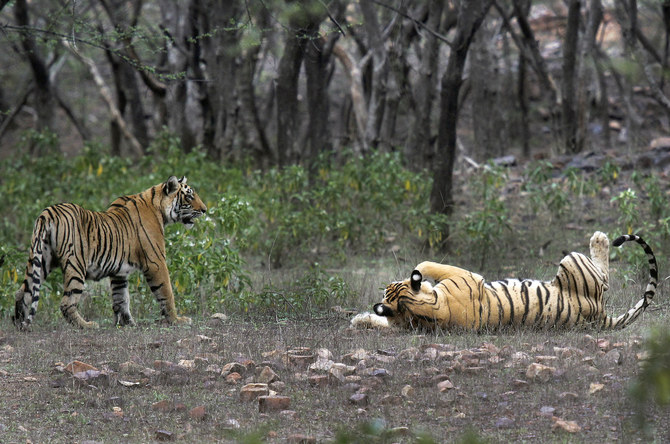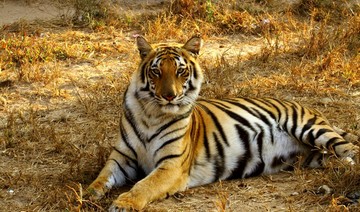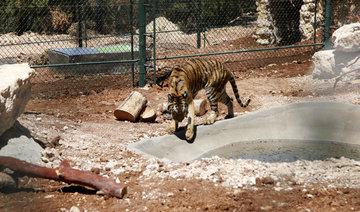NEW DELHI: India’s wild tiger population has risen above 3,000, Prime Minister Narendra Modi said on Sunday, as the country boosted conservation efforts and launched the International Big Cat Alliance to further protect the endangered species.
In 1973, India began a flagship conservation program known as Project Tiger to revive the country’s dwindling number of the big cats, after the wild population, estimated at around 40,000 at the time of independence from Britain in 1947, was found to have shrunk to about 1,800.
India’s tiger population has nearly doubled in the decades since to 3,167 as of Sunday, according to the 2022 tiger census released on the 50th anniversary of Project Tiger.
“India is the largest tiger range country in the world,” Modi said at a commemoration event in the southern Indian city of Mysuru. “The success of Project Tiger has been an achievement not only for India, but for the entire world.”
After officials found that India’s tigers were fast going extinct, Project Tiger began introducing anti-poaching measures and relocated human habitation and villages from forests, expanding and improving tiger reserves and buffer areas.
India’s wild tiger population is by far the largest in the world, and its Project Tiger success has led to discussions with Cambodia to help revive the big cat population there, which was wiped out by poaching and hunting.
Modi, launching the International Big Cat Alliance, said conservation efforts of the tiger can be further strengthened through an international grouping.
“Wildlife protection is not a one-country issue but a universal one,” he said. “The focus of the International Big Cat Alliance will be on the conservation of the world’s seven major big cats, including (the) tiger, lion, leopard, snow leopard, puma, jaguar and cheetah.”
In India, years of extensive hunting and habitat loss had not only dwindled tiger numbers drastically, but led to local extinction of cheetahs in 1952.
In a related conservation effort, Project Cheetah was launched last September to reintroduce the world’s fastest land animal to the South Asian country. This began with the arrival of eight cheetahs from Namibia and then another 12 from South Africa.
“For decades, cheetahs had disappeared from India. We brought magnificent big cats from Namibia and South Africa,” Modi said. “Few days back in Kuno National Park, four beautiful cubs were born. After 75 years, cheetahs were born on Indian soil. That is a very auspicious start.”
Kota Ullas Karanth, a conservation zoologist and leading tiger expert based in the southern Indian state of Karnataka, said Project Tiger was “a unique conservation success globally, leading to a significant recovery of tigers until 2004.”
However, Karanth said there was a shift after 2004 due to poor quality science, changes in protection priorities and also misplaced funding across reserves.
Project Tiger, he added, now must answer the challenge on how to shift the mission back to focus and “come up with a clear-headed, scientific action plan to meet a goal of 10,000 or more tigers.”
50 years since flagship conservation project, India’s tiger population rises above 3,000
Short Url
https://arab.news/pmfvm
50 years since flagship conservation project, India’s tiger population rises above 3,000

- India’s tiger population shrunk to about 1,800 in the early 1970s
- Tiger numbers nearly doubled in the decades since to 3,167













